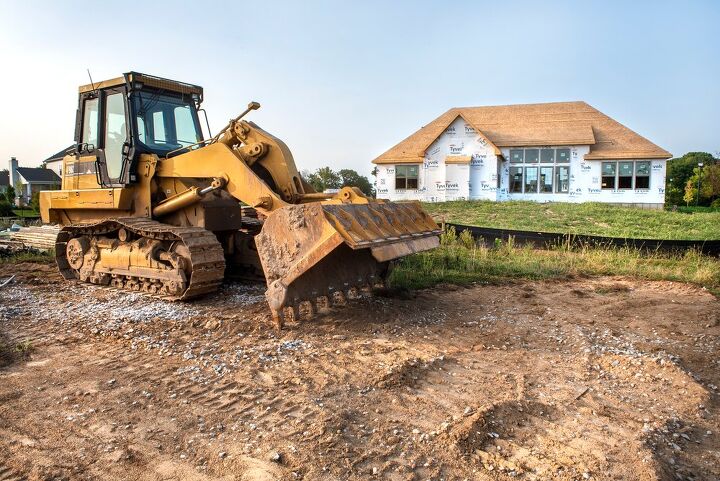How to Subdivide Land: Cost to Split a Property Into Two

The decision to subdivide land usually comes as the result of one of two different circumstances. Typically, landowners are looking to either sell a portion of the land off for profit or distribute the property amongst family members. Most commonly, real estate investors subdivide the land to increase the overall value of the property.
The subdividing land is unique to each property as the laws and regulations are dependent on the state, city, town, or districts with which it falls. Ultimately, it is up to the local officials to approve or deny each request.
Factors determining the approval of the subdivision of land include the size and shape of the property, the location of homes or buildings on the property, access to services such as water and sewage, and local zoning laws.
For landowners, the cost to split a property into two depends on local fees, which will cost anywhere between $500 and $1,500. Additionally, you will also have to pay a surveyor to have your property surveyed and platted, which will cost you another $500 to $2,000 for a mid-sized property.
What Is Subdividing Land?
Simply put, subdividing land is the process where a landowner takes one piece of land and splits it into two or more tracts.
Subdivisions can occur in any lot size ranging from hundreds of square feet to hundreds of acres. A landowner can seek out subdivisions for one new piece of land or hundreds, depending on their specifications.
How to Subdivide Land
While the subdivision process may vary in the minute details, landowners can generally follow these steps to get things started.
Step 1. Do Your Research
Before you get started with the subdivision process, you’ll want to do a good amount of research on the back end. First, you’ll want to check for any restrictions in your area, such as neighborhood covenants, local ordinances, or deed restrictions that will block your plans.
Complete a title search to identify any of these issues quickly. In doing so, you will also find out any outstanding liens or other claims on the land that will need to be addressed before your subdivision application.
Find a title company, have them verify the validity of your title, and issue title insurance. Then, complete your title search to ensure you are the only owner of the property in question.
Step 2. Contact Local Planning Office
You’ll want to get in contact with your local planning, zoning, or development office. By speaking with your local officials, you will find out all of the necessary details for the subdivision process in your area. You can do your best to research this information online, during which you should get an idea of whether your property qualifies.
Step 3. Contact a Town Planner
The next step in the subdivision process will be to speak with a town planner, subdivision specialist, or property lawyer. During this process, you’ll want to be sure you correctly research costs and restrictions associated with the subdivision process.
Step 4. Hire a Surveyor
You will then need to hire a surveying or engineering firm to survey and plat your property. These entities should also provide more guidance on whether your property should be eligible for subdivision. Even if you run into a roadblock here, you are still able to proceed at this point.
Step 5. Submit Your Application
Once you’ve gathered all the necessary documents, you will be able to submit your application. Typically, your submission will need to include:
- Certificate of title
- Plat map
- Application fee
Step 6. Receive a Response
You’ll have to wait patiently as you await a response from your local council. In certain regions, your request must be seen in a public hearing.
Step 7. Begin Engineering Design
As soon as you receive your approval from the council, you can begin engineering design and installing new services and successes. The surveying company you are working with will also begin to place new boundary pegs at this time.
Step 8. Request Certification
After the planning board has approved everything, you can request proper certification. Your certification lets everyone involved know that all conditions have been met.
Step 9. Obtain New Titles
Congratulations. Your property has been subdivided. The last and final step is to obtain the new titles for the land.
How Long Does Subdivision Take?
The amount of time it takes to complete a subdivision also may vary by location. Typically, you can anticipate the process lasting from nine months to one full year for a two-lot subdivision. Some of the other factors impacting the timeline include:
- Location
- Amount of engineering required
- Size of the lot
Cost to Split a Property
As previously mentioned, the costs associated with splitting property in the subdivision process vary greatly. While subdividing your property into two lots is significantly cheaper than splitting it into three or more, there are other impacting factors to cost, which include:
- Required improvements
- Hearing fees (if applicable)
- Local application fees
- Surveying costs
- Platting costs
Above all, the most significant contributing factors to the costs are associated with the local fees, surveyor fees, and any required improvements on your property.
Local Fees
Depending on your location and the number of lots you are splitting your property into, your local fees will likely range between $500 and $10,000. For subdividing into two parcels, you can estimate costs of around $500 to $1,500. For more splits, expect the fees to be upwards of $2,000 to $10,000.
There will be a myriad of fees, with an application fee just being the beginning. Some of the costs you can expect:
- Tax map updating fees
- Review fees
- Recording fees
- Hearing fees (if applicable)
Surveyor Fees
To have small- to mid-sized properties surveyed and platted, you can expect to pay a surveyor anywhere from $500 to $2,500. Surveyors will typically charge hourly rates, but you can sometimes find flat rates for these services.
Surveyor fees for more significant properties can easily exceed $10,000.
Required Improvements
Last but not least, the required improvements on your property can significantly increase your total costs when it comes to subdividing your land. Improvements such as creating access to roads or utilities can easily add $10,000 to $30,000 of additional fees.
Tips for Subdivision
The subdivision process can be an arduous one, which is why there are a few recommended tips landowners should follow.
Inquire About Local Surveying Services
Some local offices, including state, city, or town, offer surveying services. Before you seek assistance from a private firm, it is always recommended to inquire about local surveying services.
Typically, the locally offered services will save you some money in the long run.
Let the Pros Handle Bigger Projects
Anytime you are looking to subdivide huge lots of land that need to be split into more than three lots, it’s worth it for you to work directly with a real estate developer. Often, this scope of subdivisions is well beyond most homeowners’ wheelhouses.
Consult with an Attorney
Even if your local surveyor or officials say that your property is ineligible for subdivision, you can still consult with an attorney. Seek out an attorney specializing in zoning laws to see if you are a good candidate for an appeal. Ineligibility or not, working with an attorney is always a good idea.
Smaller Lots Increase Total Value
Don’t forget that the more you divide up your property, the more you will increase the total value of your land. But, in doing so, you want to be careful not to split the lots up too small.
To figure out what lot sizes are too small, do some research into your local area. If average lot sizes in your area are around the half-acre mark, splitting your property into quarter-acres might not be worth it after all.
Summing It Up
There are a couple of different reasons you might be considering subdividing. Whether to split up land amongst family members or sell off a portion for profit, subdivision can be a helpful tool.
Although you might think it is as easy as applying and dividing, it is, in actuality, a complicated process. Since no two subdivisions are created equal, you’ll have to talk to local officials and other professionals to ensure you are handling the procedure correctly.
Skipping a step in the subdivision process will only hurt you in the long run, as your locally governing agent will give you the book when it comes to your application. Make sure you do your research to identify all of the necessary steps for subdivision in your area. Check out mound septic system cost for 2021 if you need to develop your land.
With all the varying circumstances, it’s not surprising that costs can range so greatly. Local fees for subdividing a small- to mid-sized lot into two will range from $500 to $1,500. Additional surveying fees will be added to these costs for another $500 to $2,000.
Hiring an attorney specializing in zoning laws will incur additional costs but will help you in the long run if you face any roadblocks along the way.
Related Articles

We are a team of passionate homeowners, home improvement pros, and DIY enthusiasts who enjoy sharing home improvement, housekeeping, decorating, and more with other homeowners! Whether you're looking for a step-by-step guide on fixing an appliance or the cost of installing a fence, we've here to help.
More by Upgraded Home Team



























